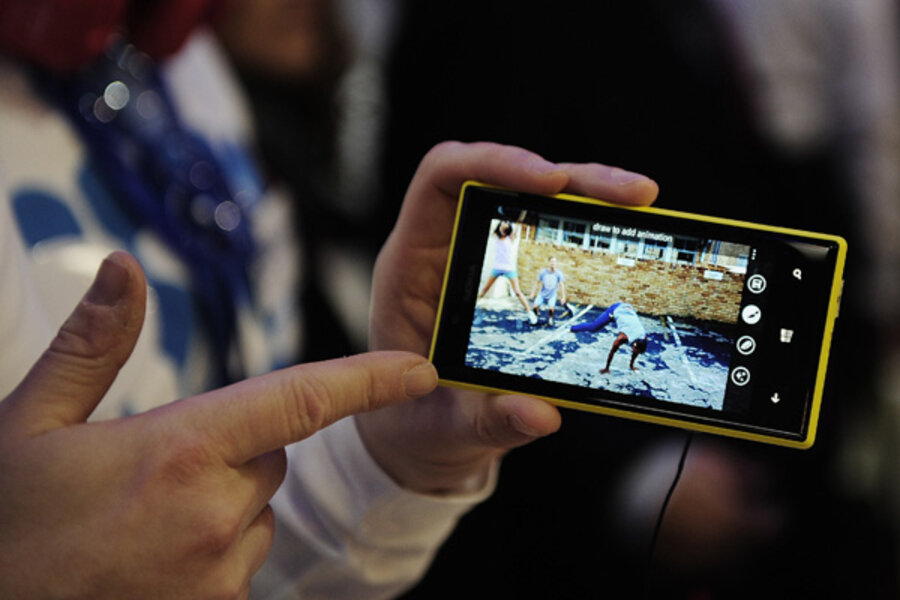What's big at Mobile World Congress 2013
Loading...
The first day of the 2013 Mobile World Congress in Barcelona has brought several developments that seek to transform the industry, from the prices to the shopping experience on the devices. Here’s what took the spotlight on the first day:
New Lumia Phones
Nokia unveiled two new Windows smart phones, the Lumia 520 and the Lumia 720, IBN Live reports. The smart phones, which come in five colors, have a 1 GHz dual-core processor and 512 RAM.
The Lumia 520 has a 4-inch screen and a 5-megapixel camera. Estimated at 139 euros ($184), it is the lowest-priced Windows 8 phone. The Lumia 720 has a 4.3-inch display and a 3.7-megapixel camera. The higher-end phone is estimated to start at 249 euros ($330).
For the first quarter, both models will go on sale in Hong Kong and Vietnam, with the 720 also available in Singapore. Nokia will release the phones in other regions in the second quarter, including other parts of Asia (particularly China and India), Europe, Latin America and Africa in the second quarter.
CNET describes the Lumia 720 as a 920 “light” with its simpler, but slightly higher-end level of hardware.
Nokia price strategy
Speaking of Nokia, it seems that the company may be working to become competitive in the Chinese market. CNET predicts that this may be Nokia’s direction since it has struggled to jump into Lumia Windows Phone devices and maintain its hold on the traditional cellphone market. China’s new title as the world’s largest smart-phone market (which it took from the US recently) makes it even more appealing to Nokia.
The Chinese market is somewhat familiar with the Lumia line. Nokia released the Lumia 920T there as an alternative to the 920 that’s tailored to China Mobile. The company, which has the largest customer base, has also signed on to sell the new Lumia models.
Phone meets Firefox
ZTE introduced the Alcatel One Touch Fire, the first device with a Firefox OS. The phone is an orange, 3.5-inch device with only a single-core 1 GHz processor and a 3.2 megapixel camera.
GSM Arena noted that when Mozilla announced that it had deals with 18 carriers, a partnership with Qualcomm to use their Snapdragon chipsets, and four manufacturers.
Android tablet by HP
Hewlett-Packard introduced the Slate 7, a 7-inch tablet running Android 4.1. This is the first tablet HP has released since the HP Touchpad, which it discontinued less than two months later, according to TechCrunch. The Slate 7 is expected to go on sale in April with a price tag of $169.
HP hopes that printing will set the tablet apart in the eyes of consumers. The company has enabled printing from most apps through drivers and HP’s ePrint technology.
Ars Technica says the tablet looks attractive for the price, but that it might not be able to shut out the Nexus 7 and its higher-quality specs. The Nexus has a quad-core Tegra 3 processor, a higher resolution, and more internal storage. The Slate 7 has 2.4 GHz processor, 1 GB in RAM, 8 GB of internal storage.
Chris Velazco of TechCrunch says the Slate 7 functional and affordable, but not much else: “Swiping between home screens could be a little jerkey (if it worked at all; quick swipes didn’t always get the job done), and there was a bit of delay as I went to fire up new apps — though some non-final software probably has something to do with that.”
Mobile pay?
Visa and MasterCard are trying to make mobile pay happen with their new digital services. While MasterCard introduced its digital service, “MasterPass,” Visa announced that the Samsung Galaxy S4 will incorporate the company’s PayWave mobile payment applet.
Samsung has worked on improving the connection technology for mobile pay, near-field communication, but the partnership with Visa suggests it will finally worked out the kinks, CNET suggests.
The MasterPass service will support NFC, QR codes, tags, and mobile devices used at points for sale, according to ZD Net. One plus of the product, according to Master Card at least, is safety. MasterPass is expected to store personal information through a secure cloud.
Galaxy S4 to launch elsewhere
Samsung will launch the Galaxy S4, the successor to the world’s most popular smart phone. Just not at MWC, ZD Net reports. Instead, Samsung will host its own launch event on March 14 (also known as Pi Day) in New York.
The company decided on a New York venue after receiving numerous requests from American carriers to reveal the devices in the US, according to a Reuters report.







